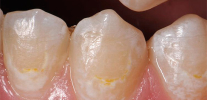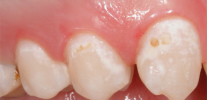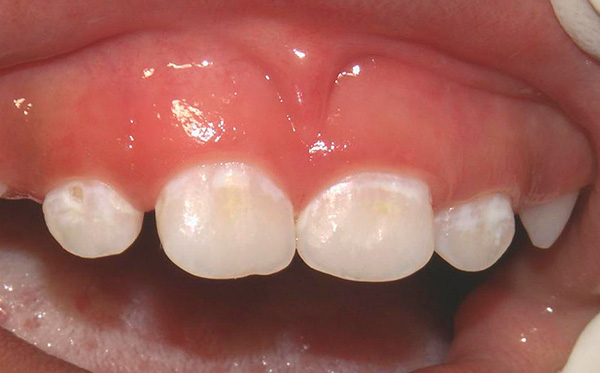
Next you will find out:
- What is the so-called caries in the stage of white spots and what will happen next with the tooth enamel, if you do not pay attention to this pathology in a timely manner;
- How can one recognize in time the initial caries independently, at its earliest stages, just by standing at home in front of a mirror;
- What to do if you (or the child) are offered to treat caries in the staining stage by silvering;
- How effective is remineralization therapy and enamel fluoridation in such cases and whether a positive result is achieved quickly;
- What are the current preparations that allow to restore the tooth enamel at home during the initial caries;
- What is the treatment of caries in the stains stage by the so-called infiltration method (Icon) and why, in some cases, instead of this technology, it will be necessary to limit the use of a drill and the production of a seal;
- What is important to keep in mind if you suddenly want to solve the problem of imperfections of the front teeth with stains by using veneers ...
Like other diseases, caries has its characteristic initial stage - at this stage the pathological process is still poorly pronounced and destructive phenomena are not very noticeable. The initial stage of caries is the so-called focal demineralization of tooth enamel, or, in other words, the stage of the stain (in this case, mean white or chalky spot - it really looks bright, because it is not pigmented).
Demineralization of tooth enamel occurs primarily under the action of organic acids secreted by bacteria of dental plaque, and is associated with the active loss of calcium by hydroxy- and fluorapatite crystals - the main structural components of enamel.
On a note
With caries in the white spot stage, due to destructive processes, tooth enamel in some places loses its natural transparency, becomes matte, which is visually just perceived as the appearance of strange white spots on a tooth. The appearance of such stains should be taken seriously.
The photo below shows an example of caries in the white spot stage in the cervical area of milk teeth:
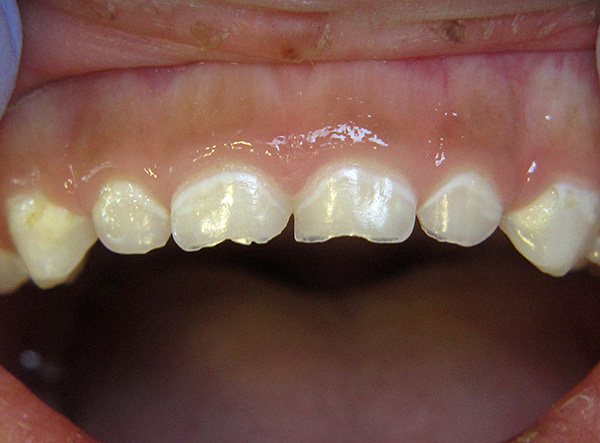
The following shows how a situation might look like in an adult when wearing braces:
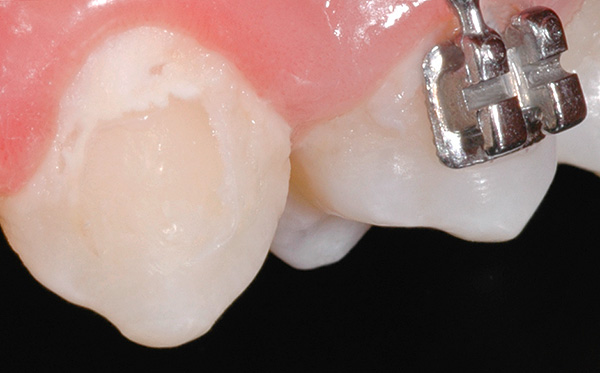
And what will happen if you do not treat caries at this stage?
Actually, for many people, the first thought is approximately the following: if nothing hurts and, in principle, it doesn’t spoil the appearance, then why not leave it as it is, you don’t want to go to the dentist once again. Perhaps, all by itself will resolve ...
However, it should be borne in mind that caries in the white spot stage is barely noticeable at the initial stage - the white spots usually pigment rather quickly, become dark (from yellow to black) and deepen.

In addition, the treatment of caries in the stage of white or chalk spots in some cases can be carried out without a drill at all, since the process of initial demineralization of enamel is reversible in many ways.
About what can wait for you in the dentist's office in the treatment of initial caries, and also what you can do at home to eliminate the effects of enamel demineralization - we will continue to talk about all this and more ...
How to recognize the problem in time
It is usually easiest to recognize caries in the stage of white spots on the front group of teeth (from canine to canine), more difficult - on the molar teeth, especially if there has been cervical caries.
The photo below shows an example of caries in the stains stage on the upper incisors:
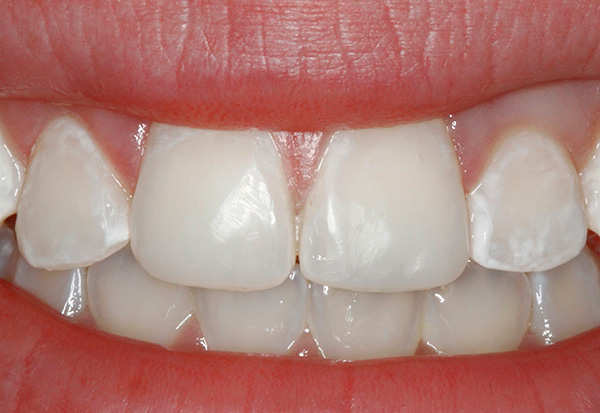
Recognizing the problem in such cases is usually quite simple: the gradual appearance of unusual light enamel areas on the tooth over a relatively short period of time (for example, for several weeks or months) clearly indicates a pathological process. Demineralization areas are especially noticeable if the enamel is slightly dried, for example, standing in front of a mirror and drawing air through your mouth through your teeth.
On a note
Stains on teeth may also appear due to the development of fluorosis in people living in areas where water has an elevated fluoride content (the so-called endemic fluorosis). However, today it is quite a rare phenomenon - at least, much more rare than the appearance of stains on the teeth due to caries.
A more accurate diagnosis of the nature of bright spots on the tooth enamel is possible: brush your teeth well enough and then treat them with a 2% aqueous solution of methylene blue dye, washing the dye with water after 2 minutes. Porous demineralized area of tooth enamel will turn blue with varying intensity. If the stain is not related to caries, then it will not get a blue color.
In case of suspected caries in the staining stage, it is advisable to visit the dentist and conduct a more accurate diagnosis. In this case, the dentist, most likely, will also use any caries indicator (caries detector), that is, a solution of one or another chemical dye that can be absorbed by porous demineralized enamel.
The photo below shows how this might look in practice:
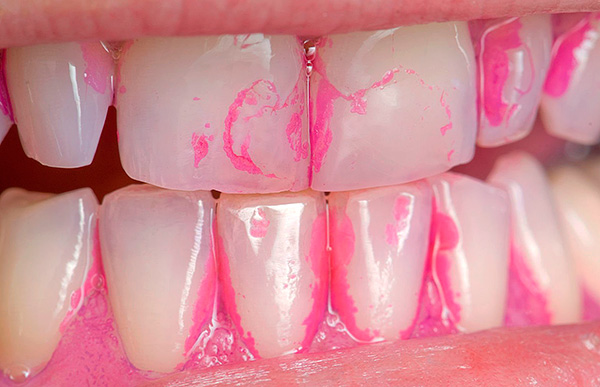
It is interesting
One of the methods for the diagnosis of surface caries is stomatoscopy in ultraviolet light. Healthy tooth tissue at the same time manifests a light green glow, and carious areas appear darker. In case of non-carious damage to enamel (for example, hypoplasia), the tissue acquires a gray-green luminescence.However, this technique is not widely used today, and in clinics are usually limited to examination of the oral cavity and methods of vital staining.
Treatment of caries in the staining stage using silvering: is it worth agreeing?
One of the methods of "treatment" of caries in the staining stage is the so-called method of silver plating of teeth, used primarily in relation to milk teeth in children. More precisely, this method is positioned rather as a method of preventing the further development of the carious process.
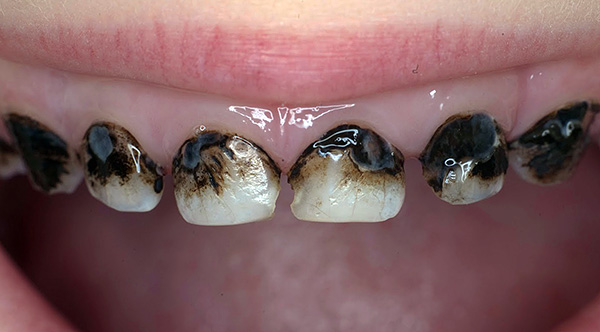
On a note
The silvering method is carried out by adults only in exceptional cases (severe mental disorders, inability to withstand long-term dental procedures), and in general, it is used only in pediatric dentistry.
Today, the method of silvering teeth causes a lot of controversy, and many reputable doctors consider this technique to be a real evil for modern society.
But let's first consider the essence of the procedure and why, in fact, it is carried out: when silvering children’s teeth are processed with a concentrated solution of silver nitrate.During the chemical reaction, silver ions are restored in the surface layer of the tooth enamel to metallic silver, which is deposited in the smallest pores and is not washed away with anything further.
In this case, it is believed that due to the bactericidal effect of silver, unfavorable conditions are created for the vital activity of bacteria that cause the formation of plaque and the development of caries. There are no bacteria, no plaque, no organic acids that lead to enamel demineralization - and this means that caries does not progress. At least that's how it looks in theory.
In some cases, the silvering of teeth is carried out in several stages with repetitions up to 2 times a year. Advantages of the procedure:
- There is no negative reaction of the child, as the teeth are simply smeared with something (and not drilled with a terrible drill);
- Teeth can be silver even for babies of 1 year;
- Low price, and in state institutions - for free;
- At observance of indications to procedure and accuracy of technology caries sometimes really freezes at the available stage.
However, in practice, situations are not uncommon when silver plating doesn’t have any effect on the further development of the caries process in a child.As a result, the initial caries safely goes into the middle, and then into the deep.
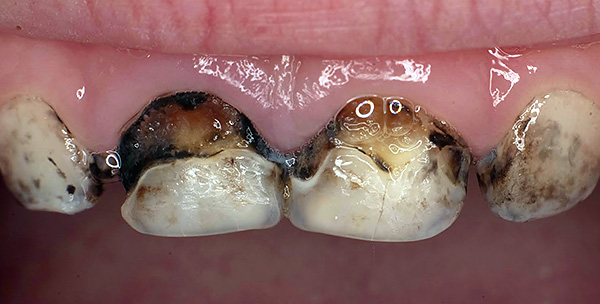
Therefore, the feasibility of treating caries in the stains stage using the method of silvering the teeth is criticized by many practicing dentists. Disadvantages of the procedure:
- Disruption of aesthetics due to discoloration of the teeth (to put it simply, the teeth become almost black, as if they are all rotten, although this is only the color of fine metallic silver);
- Impossibility of use with deeper defects;
- Often low or no efficiency at all.
Perhaps the main trouble is the very persistent blackening of the teeth after the procedure, which is unacceptable in modern society, because the formation of a child takes place in a team (kindergarten, clubs, sections, clubs). Black teeth and constant ridicule from peers about this can have a long-term adverse psychological effect on the child.
On a note
Sometimes dentists silver their front teeth to babies when it is no longer a question of initial caries. So, the use of silver with medium and deep caries is even less justified than with the initial one.
Deep fluoridation and remineralization of enamel
As noted above, the appearance of a white (chalky) spot on the tooth surface is associated with the process of local demineralization of enamel. So why not try to return to the enamel its lost components - calcium, fluorine, phosphorus? ..
It is on this idea that the method of treatment of caries in the staining stage is based on deep fluoridation and remineralization of tooth enamel.
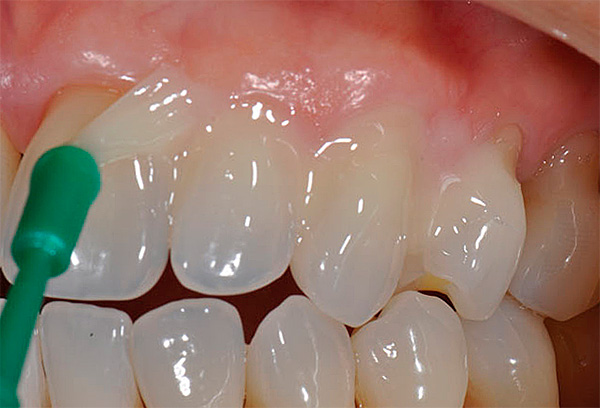
Studies have shown that remineralization therapy and deep fluoridation do often make it possible to achieve a positive effect, but only in the case of focal demineralization in the form of a white spot. A pigmented stain cannot be restored to the original normal state of the enamel structure by similar technologies, although the carious process will be suspended.
By remineralizing therapy is meant the introduction of calcium, phosphorus and fluoride ions into the enamel structure by means of applications or electrophoresis (the latter option is more effective). During the procedure, the minerals diffuse (penetrate) into the zones of weakened enamel and restore the areas of the broken crystal lattice.
Deep fluoridation is the treatment of tooth enamel with fluoride, due to which its content increases the content of chemically very inert fluorapatite, which has, in particular, a high resistance to acids.
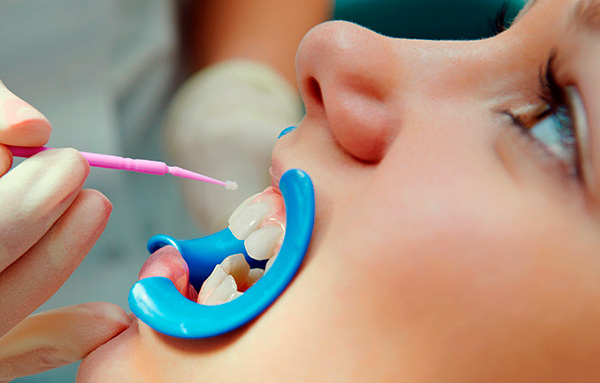
The complex of these procedures is assigned with the aim of turning a chalky spot on a tooth into a site of healthy enamel with natural clarity and brilliance. Each technique has its own effectiveness and speed to achieve a result - sometimes it can be achieved in 3-4 weeks, and sometimes it is necessary to conduct course applications up to 6 months or more.
On a note
Effectively and quickly suspend the initial caries with the help of these procedures is really possible. But how much time will pass before the return of the natural luster of enamel is unknown in advance, since this is largely determined by the characteristics of the particular clinical situation.
The enamel remineralization can be carried out not only in the dental office, but also independently, using appropriate means at home (see below).
A few words about home methods of treatment of caries in the stage of stains
Before treating caries in the white spot stage for a long time at home,it is advisable to consult with a dentist - does it really make sense in your situation to do this, or, perhaps, it’s time to put a filling, and not to work with lotions on a tooth.
Today, there are various means available on the market, which make it possible to gradually saturate the tooth enamel with its lost mineral components. In particular, a noticeable positive effect (especially under the control of the dentist) can be obtained with the help of the following drugs:
- Remineralizing gel ROCS Medical Minerals. It is a source of calcium, phosphorus and magnesium (there are no fluorine compounds in the gel composition). It is positioned not only as an effective remedy for the prevention of caries, but also as a drug that allows you to restore the luster of enamel during caries in the staining stage. Suitable for use for children from infancy. With a compensated form of caries (that is, when the carious process as a whole can be called slow), the manufacturer recommends course application - 4 courses of 10-12 procedures per year. ROCS Medical Minerals gel is also indicated when wearing braces (enamel demineralization zones are often formed around the locks), after the teeth whitening procedure, with enamel hypoplasia and fluorosis;
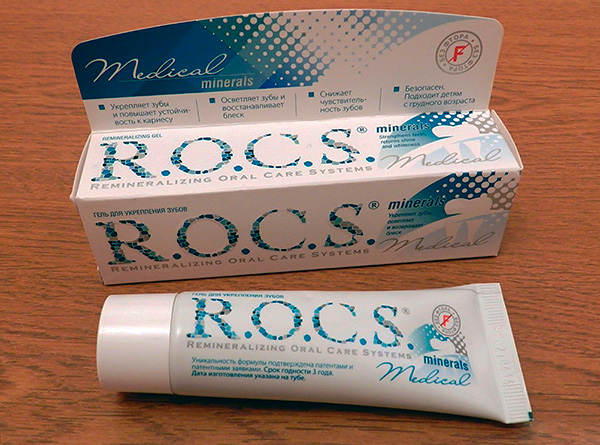
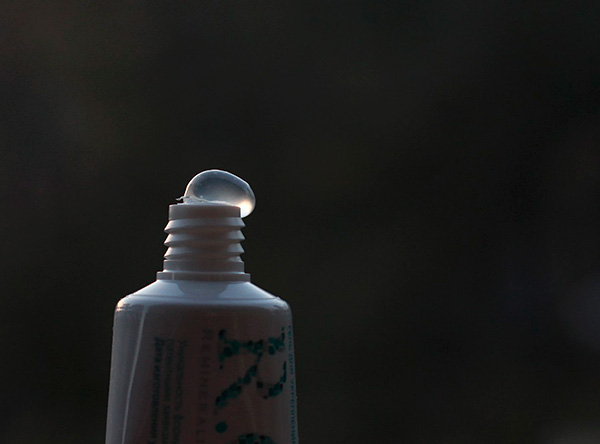
- Gel stomatologic Elmex.It is also intended for remineralization of decalcified enamel areas, which allows for effective prevention of caries and treatment of its initial forms. Unlike ROCS gel, Elmex gel contains fluorine compounds, therefore it is contraindicated in fluorosis. The tool is intended for adults and children from 6 years;
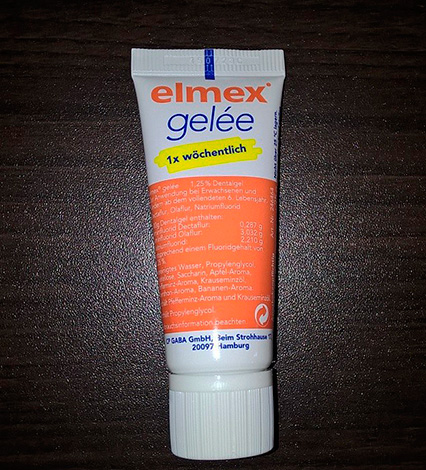
- Remineralizing gel Amazing White Minerals. The properties and scope of application is very similar to Elmex gel, and also contains fluorine compounds.
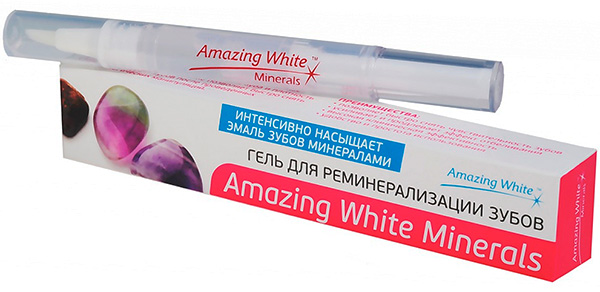
You can find other remineralizing drugs suitable for home use.
The purpose of the application of these funds is to provide an additional influx of mineral components into the surface layers of enamel.
It is interesting
The study of the mechanism of remineralization of tooth enamel began, in fact, about 100 years ago. The first experiments took place on the removed teeth: in particular, it was noticed that the hardness of specially demineralized enamel increased when normal saliva was added to the teeth. Later it is saliva that is recognized as the natural environment providing the process of mineral recovery of enamel (some dentists figuratively call saliva "liquid enamel").
Possibilities for treating caries in the staining stage using Icon technology
Let us proceed to the consideration of a more effective method of treating caries in the staining stage without the use of a drill, namely, to consider the technology of treatment of initial caries by the infiltration method (Icon technology).
Generally speaking, the principle of treatment is quite simple. First, the dentist conducts cleaning of teeth from plaque and tartar, assesses the state of the carious process. If there are indications for the application of the procedure, then a special gel based on a small concentration of hydrochloric acid is applied to the dried surface of the tooth, which helps the upper layer of enamel to dissolve.
The top layer of enamel (the most durable) is only conditionally healthy during caries in the staining stage, since under this "shell" the crystal lattice is perceptibly damaged due to the loss of mineral components. After washing off the acid and drying the surface, an infiltrant is introduced, which fills the entire porous structure; then it is polymerized in portions, activating the polymerization process with an ultraviolet lamp. A kind of “filling” obtained is polished with discs and brushes.


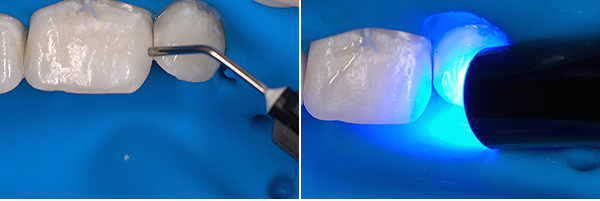
In fact, we have an approximate scheme of setting a light-cured filling in one visit, but in this case, not a drill, but hydrochloric acid, as a good solvent of the weakened structures of the tooth enamel, is used as the “eradicator” of carious tissues.
Treatment of caries in the stains stage by infiltration can be applied even in children from 3 years of age, which is an excellent alternative in every sense to the hopelessly outdated method of silvering teeth.
However, the possibilities of Icon technology, unfortunately, are not limitless. For example, in the case of dentogenation, as well as if the enamel is too thin (for example, in the cervical area), or if there is an already formed carious cavity, this method will be unsuitable. The Icon technology has a positive effect only on the outer layers of enamel, that is, its healing effect is directed specifically at caries in the staining stage.
Be that as it may, Icon at the moment remains a popular, modern and quite effective way to treat caries in children and adults in the initial stage of carious destruction of tooth tissues.
Feedback
“We are now with our daughter every time we wind up to Moscow, doing deep fluoridation. I do not know how much more to torment the child to be. I want ICON to do it already, in our clinics they haven’t even heard of it, they just drill there. In one clinic heard, but do not even plan to introduce. In short, we are tight with this ... "
Ekaterina, Izhevsk
Treatment of initial caries using a filling method (restoration)
As mentioned above, a dark (pigmented) carious stain on a tooth, in contrast to a white (matte), is often no longer possible to turn into a normal state using only the remineralization procedure. Icon system, too, may not be shown in all cases, and far from all cities are still available.
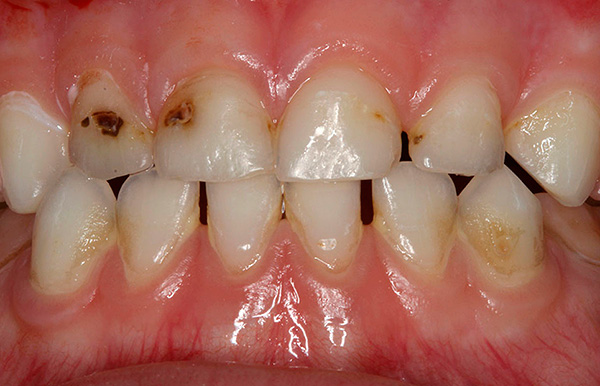
As a result, a good alternative, which today is the most accessible to wide sections of the population, can be the grinding and subsequent filling of carious spots.
Depending on the clinical situation, the dentist may not even use boron, limiting himself with special discs or grinding and polishing heads. And even if the preparation of the enamel area with a carious stain is carried out using boron, the processing time is insignificant, as well as the depth of the formed defect.
After cleaning the tooth from carious tissues, a filling material is applied to the prepared zone.
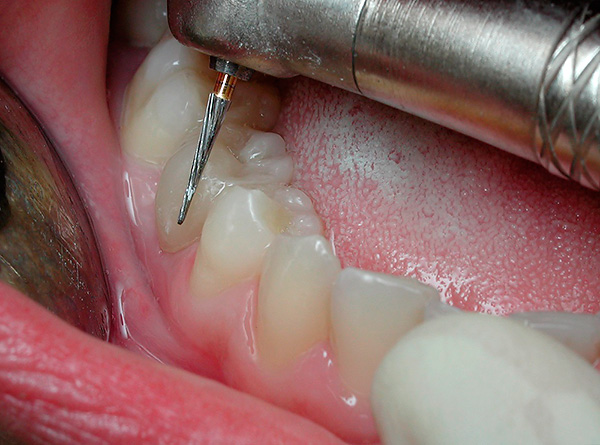
The choice of material usually remains with the attending physician (although the patient also takes part in some clinics, especially when the cost of filling is different from different materials). It is best to use light-curing filling materials for the frontal groups of teeth.
Feedback
“I came a week ago to the city clinic, so that the black spot on the tooth was removed. So said the doctor, grind caries, please. I don’t know what the hell they do there, but only she did what wasn’t necessary. Shlifanula without a shot, it was painful. He says, like she did, you can go home. Free it is free, the stain has disappeared, but the surface of the tooth began to look like pokotsannaya, and the reaction from the cold appeared. I went to a private clinic, where I neatly completed everything. They put a tiny filling on the tooth, polished it, covered it with some kind of varnish, the tooth immediately passed. In general, in free dentistry, do not throw phrases like pulling out my tooth, grinding caries, but they will do it at the request of the workers, and not as expected. ”
Max, Zvenigorod
Modern orthopedic methods of restoring the aesthetics of teeth affected by caries
If everything is clear with regard to putting a tooth on a tooth (a carious enamel area has been processed - a seal has been put), then about the orthopedic ways of restoring the aesthetics of teeth during caries in the staining stage, an unprepared reader may have serious doubts and quite reasonable questions.
For example, like this: is it really necessary to grind teeth, put crowns or otherwise prosthetics for the sake of a carious stain?
Of course, this is not about crowns. To date, ceramic veneers and lumineers are becoming very popular. Veneers are, in fact, porcelain lining-plates on the visible part of the tooth, allowing you to adjust the shape and color of the tooth, as well as provide a protective effect.
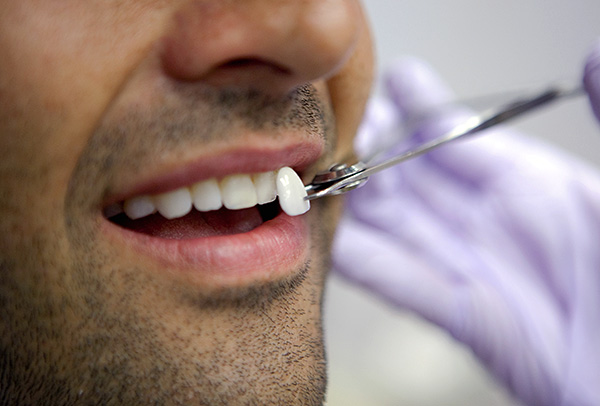
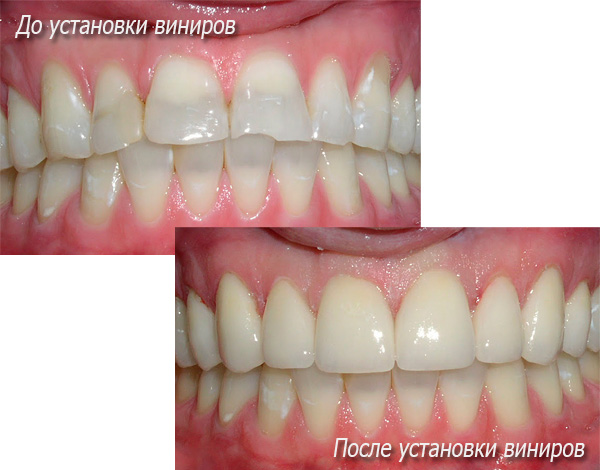
Lumineers, unlike veneers, are so thin that they are fixed without prior tooth turning, or with minimal grinding.
On a note
High aesthetics, strength and durability of veneers and lumineers allow them to become increasingly popular among the people. Really,in a number of clinical cases, such overlays with a relatively small expenditure of time and money make it possible to get an almost Hollywood smile with initially mediocre teeth.
However, in the context of our topic, this technique should be considered more critically. In particular, due to one or two pigmented spots with normal shape, color and position of the front teeth, the advisability of installing veneers is doubtful: it is enough to do with Icon-technology or filling. Therefore, do not rush without a compelling need to grind your teeth under the veneers, no matter how tempting the pictures in advertising appear to you.
If you have personal experience in treating initial caries, be sure to share the information by leaving a review at the bottom of this page (in the comments box). Perhaps someone information will help make the right decision in a similar situation.
Useful video: how to stop caries in the stage of white spots - the advice of a dentist
Treatment of initial caries without a drill using Icon technology

